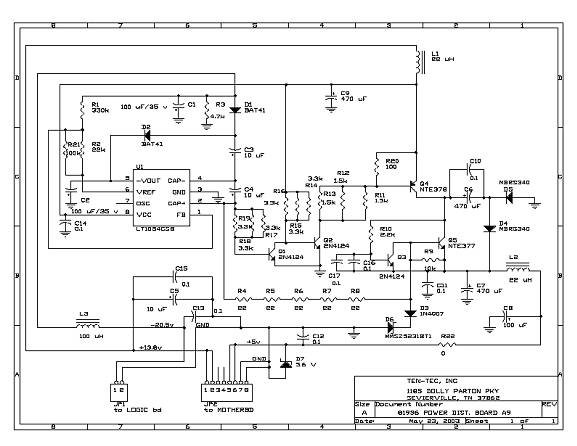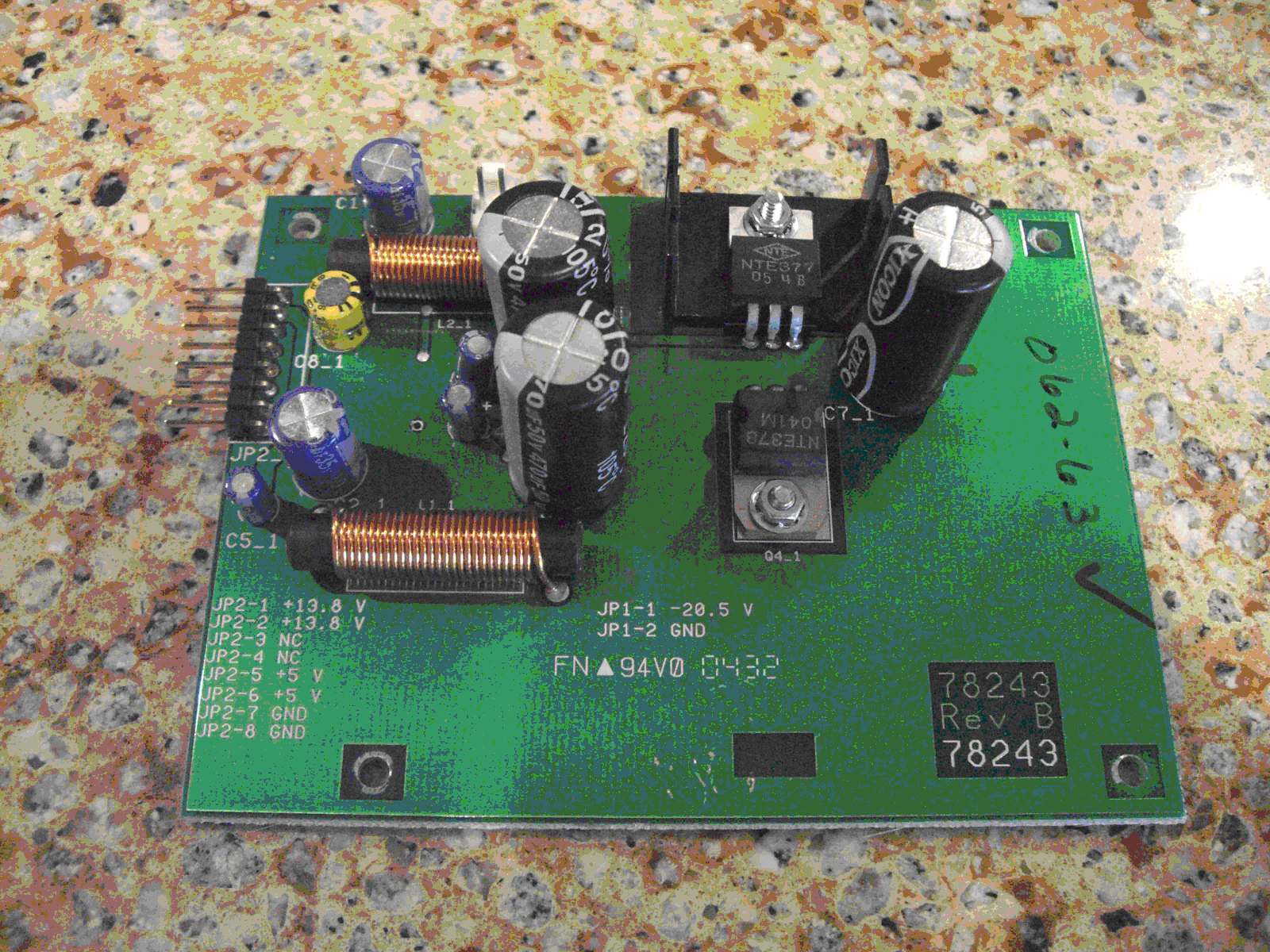The Orion II A9 Power Distribution Board
Problem and Fix
The Ten-Tec e-mail reflector at contesting.com has many references to strange problems that cause the Orion II to not boot up and run. This has happened twice to my radio. The first time, I sent it back the factory and about $200 (including shipping) later it came back working fine, but after a few months, the problem returned. In some cases I have heard of, the radio is simply DOA, and in others, like the second time around on mine, when the power is turned on you see what looks like a normal start sequence, however, just when the rig is ready to start making sound, the lights flash and it “reboots” itself. This happens over and over several times until it either starts or you shut it down.
This most resent manifestation of the problem I had can be seen in this YouTube video posted by a French ham:
http://www.youtube.com/watch?v=mQKA6ExcQsU
I hate to give away the ending, but eventually, the radio starts after 6 or 8 tries. You get the gist of it after the first 30 seconds without watching whole show!
What Causes the
Problem?
The A9 Power Distribution board supplies voltage to, among other things, the CPUs in radio. Its schematic is below:

Orion II A9 Power Dist. Board
I’m no expert, but one of the crew on the reflector says that this design is very hard on the filter caps, especially C6 and C9, both 470 uf, 16 Volt, 85° C electrolytics. These caps need to have extremely low Equivalent Series Resistance (ESR) as well as excellent ripple specs. You can’t just pick up any old 470 uf cap from the junk box and expect it to perform. It would also seem logical that caps rated at 105° C with a higher voltage rating and with a larger physical size to dissipate more heat would make them last longer.
When I looked at the board, C6’s top was bulging, a sure sign it was the culprit. I determined that replacing all three of the 470 uf units, including C7, would make sense.
I searched around for premium caps for replacements and finally settled on ones from the Mouser catalog made by Xircon, model 140-ESRL50V470-RC. These units are rated at 50 Volts, 105° C and have excellent ESR and ripple specs. Even though they are physically much larger, the lead spacing is the same as the originals, so they fit perfectly. You can find them at:
Just cut and paste the part number, 140-ESRL50V470-RC into the search box and you’ll find them, at a whopping $1.35 each!
The good news is that the A9 board is very easy to find and remove, and there is more than enough room on the board and in the cavernous chassis of the Orion II to accommodate the larger capacitors. To find the board, turn the radio upside-down, take off the bottom cover, and you’ll see the small board sitting by itself. Here is what it looks like with the factory capacitors:

The cap farthest to the right and two large ones to the left of the middle are the 470 uf units. Now the “after” picture with the new, beefier, 50 Volt caps:

Much better! Here are a few cautions:
Make sure you note the polarity of the caps! Mark the board since the new cap will cover the silk-screened “+” marking. On the picture above, the gray side mark on the caps is the Negative side.
The PC board is double-sided, so getting the old caps out without leaving the holes clogged is nearly impossible, and my solder-sucker didn’t work! It was a bit of a chore to get them into place.
How Long Will It
Last?
Good question. I just did the fix late in June 2008 and I wrote this the same day, so there is no real way to know, except to say that the problem was fixed with no further ado. I use the radio a lot, probably an average of 10 hours per day, everyday, but I won’t be ready to declare this the “final fix” for at least another year. If you run across this article in the future and need to do the fix, please feel free to e-mail me at ron@N6IE.com and ask if it’s still working!
73 & GL
Ron N6IE